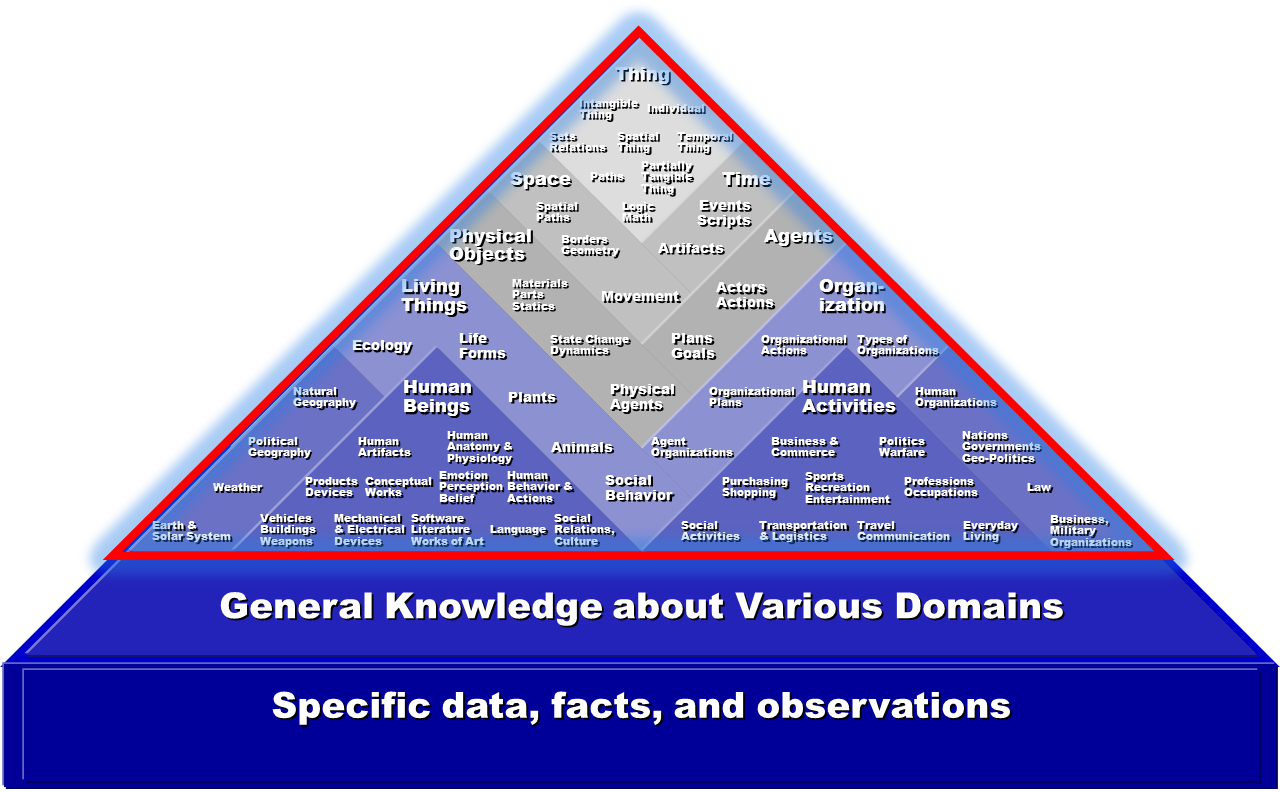In Part 3 of these on-going dialogues about big data, I discussed a couple of software tools that are widely used to crunch large data bases: MapReduce and Hadoop. In that post, I noted that IBM used Hadoop as the engine for its Watson computer, which became famous for beating human champions on the television game show Jeopardy. For more on that competition, read my post entitled Artificial Intelligence and the Future. In mid-September, healthcare provider WellPoint announced that it was hiring IBM to provide the Watson technology as diagnostic tool. This was “the first time the high-profile project will result in a commercial application.” [“WellPoint’s New Hire. What Is Watson?” by Anna Wilde Mathews, Wall Street Journal, 12 September 2011] Mathew reports:
“WellPoint said it plans to use Watson’s data-crunching to help suggest treatment options and diagnoses to doctors. It is part of a far broader push in the health industry to incorporate computerized guidance into care, as doctors and hospitals adopt electronic medical records and other digital tools that can record, track and check their work. … The first Watson deployment would come early next year with WellPoint nurses who manage complex patient cases and review treatment requests from medical providers. Then the insurer will roll out the technology to a small number of oncology practices, which would likely allow doctors to access it through their own computer systems or tablets. Lori Beer, a WellPoint executive vice president, said the company hopes the service will improve quality of care, which it believes could lower costs. WellPoint officials said they ultimately want to provide the Watson service more broadly to physicians who treat complicated chronic conditions, and they hope to create an application that could be accessed directly by patients seeking health information.”
Steven A. Mills, Senior Vice President of IBM’s Software Group, told Mathews that Watson technology “could be used in settings as varied as call centers and offices doing engineering and scientific work, and he believes the Watson technology carries the potential to grow into a business generating $1 billion of annual revenue.” Earlier this year, Karen Butner, Global Supply Chain Management Leader for the IBM Institute for Business Value, suggested that Watson technology could “help supply chain managers gain meaningful insights from massive amounts of unstructured data.” [“How Watson Could help Supply Chain Management Operations,” Supply Chain Digest, 20 May 2011] She writes:
“Anyone watching Watson’s victorious performance on Jeopardy! couldn’t help but be wowed by the machine’s ability to answer really difficult questions on many different subjects. And global supply chain executives– who must simultaneously manage a myriad of issues ranging from customer demand variations to logistical constraints as part of their daily routine — undoubtedly took note of Watson’s prowess. Watson represents a major breakthrough in using computers to answer questions posed in natural language on a virtually unlimited range of subjects. Developed by a team of IBM scientists, Watson can quickly, accurately and confidently answer complex questions using advanced analytics and scoring algorithms, all of which could bring tremendous benefits to supply chain management operations.”
Watson’s “prowess” is really a matter of brute force. Using Hadoop it plows quickly through oceans of data looking for potential answers and pops out its best guess. Because it draws from a vast data base (the so-called “big data”) its guesses are usually pretty good. Butner writes, “During its Jeopardy! matches Watson analyzed ‘clues’ to comprehend their meaning. Then it pored through the equivalent of roughly 200 million pages of natural language content contained in its memory (sort of like reading a million 200-page books in a couple seconds) to find the correct answer.” She believes, as do I, that big data technologies will have dramatic and positive impact on supply chain management. She continues:
“What Watson represents for SCM is the ability to gain meaningful insights from massive amounts of unstructured data. Watson demonstrates in dramatic fashion how advanced analytics can be applied in creative new ways, beyond traditional data warehousing or business intelligence and data mining. Watson can deliver faster, deeper insights into unstructured data (such as the burgeoning social mediasphere) and human language text. As such, it holds enormous potential to transform how computers help people accomplish tasks in business, communities and their personal lives. In the world of SCM, Watson’s speed and analytics skills could go a long way in helping executives address their current challenges. According to IBM’s most recent SCM study, which surveyed and interviewed 664 supply chain management executives across 29 countries, the three biggest challenges they’re wrestling with today are:
- Volatility – global complexities, market shifts, and the resulting fluctuations in customer demand
- Visibility -lack of access to timely, worldwide information to make in-stream decisions – fast!
- Value – the constant pressure to create value for the enterprise through end-to-end supply chain cost efficiencies and pipeline inventory optimization”
To read more about what Butner has to say of these three “Vs”, but especially about visibility, read my post entitled Supply Chain Visibility. Butner goes on to describe how she believes “Watson-like” technology could benefit supply chain professionals. She writes:
“Watson-like technology could be a tremendous asset to SCM professionals in a number of ways. Imagine Watson as:
Supply Chain Synchronizer — SCM execs could more easily achieve the intricate synchronization of supply and demand by integrating Watson-like technology in an intelligent network. If the system could read a million books in a couple seconds, imagine how quickly it could gather information across all of the supply chain functions (planning, forecasting, scheduling, sourcing, transportation, manufacturing, distribution, inventory management, customer order fulfillment). Make-to-order would take on a whole new meaning and just-in-time deliveries would be a way of life for all industries. It could also tap market intelligence, advanced analytics and varied customer communications and comments/sentiments from the social media sphere and be ‘at the ready’ with answers to SCM executives’ broad-ranging queries as they try to preemptively identify potential fluctuations in consumer demand.
Product Lifecycle Lifeguard — As product lifecycle traceability grows as a concern for many industries, imagine how easily Watson could track the information gleaned from smart devices as they tag products throughout the supply chain, as well as the containers and modes that are transporting them. Keeping its figurative finger on the pulse of RFID, GPS, sensors and actuators at all times, and blending this data stream with predictive planning and actual transactions (orders, inventory, shipments) should pose no problem for Watson. And it would be a reassuring source of information for SCM management.
Sustainability Savant — Watson’s analytics and modeling prowess could be used to evaluate inventories at all phases, from earth (raw material), to consumption, to afterlife … to achieve best inventory position and levels, while managing its effects on the environment. In addition to focusing on the distribution network, Watson could help provide advice on strategic sourcing concerns which are growing in importance as SCM managers design their networks for sustainability.”
I agree that Watson-like technology could be used in all those ways. But Butner isn’t through yet, she foresees more uses for Watson-like technology. She writes that it could be used as an “advisor on cost-efficient practices.” She writes:
“Watson could also provide advice on cost-efficient sustainability practices. Imagine having all this computing power and resources at your fingertips as you evaluate the trade offs of the carbon footprint, energy and water usage in creating, shipping or disposing of products.
Risk Ranger — Watson could also flex its modeling capabilities to provide SCM executives and managers with probability-adjusted risk assessments for risk avoidance. Dealing with day-to-day interruptions and disruptions is an increasing concern in today’s global marketplace. Watson could quickly assimilate important weather or newsroom developments to make recommendations for alternative sources of supply, transportation and routing.
Cost/Constraint Counselor — Here’s where Watson could really shine. With its instantaneous ability to provide ‘What-If’ modeling scenarios, SCM managers could tap Watson to determine optimal pipeline inventory levels, and determine whether to partner or outsource to benefit from flexibility, scale and skills. SCM executives could ‘converse’ with Watson to quickly and easily evaluate the myriad of trade-offs of cost with other constraints. They could select the best variable cost structures to enhance their supply chain networks and create cost-efficient sustainable products and practices while hedging risks with partners.”
Long-time readers of this blog know that I’m a fan of “what if” analysis. For more on that subject, read my posts entitled Modeling “What If” Scenarios and Examining the “What Ifs” in Life. Although Butner earlier claimed that Watson could “quickly, accurately and confidently answer complex questions,” she later admits that that Watson “actually provides a number of answers along with a confidence ranking for each answer.” She concludes:
“Today’s modern supply chains are incredibly complex and the demands of business just keep getting tougher. The capability that Watson could bring to this to this no-nonsense environment would provide huge competitive advantages for SCM executives who are looking to better understand their customers, gain greater supply chain visibility and exploit global efficiencies in ways that create value for their enterprise.”
I think that Butner makes a great case for “Big Data” technology. Analyzing big data requires a big capability. But the IBM approach is not the only “big data” approach that can or should be used. Humans provide answers to questions on two levels. For example, if you ask someone, “What color is the sky,” they will quickly answer “blue” without much thought. That is what Watson does (but Watson’s intuitive, or short-term, recall is massive). It’s a great capability and it has its place in supply chain analytics. But humans are also asked to answer questions that require them to think harder, dig deeper, and tap relationship that aren’t always obvious. Watson can’t do that. Enterra Solutions® uses another approach (one that involves a unique and carefully constructed ontology). An ontology deals with how entities can be grouped, related within a hierarchy, and subdivided according to similarities and differences. The following graphic (a depiction of Cycorp’s Cyc Knowledge Base) shows how intricate and nuanced these relationships can be.

The benefits of using an ontology include: Sharing common understanding of the structure of information; enabling reuse of domain knowledge; making domain assumptions explicit; separating domain knowledge from the operational knowledge; and analyzing domain knowledge. Together IBM’s approach and Enterra’s approach more closely replicate human thought processes, but on a massive level. IBM’s technology is great for short-term recall and, when that is insufficient, Enterra’s ontology approach provides more nuanced, analysis along the lines of long-term recall and relational thought processes. Each approach has its strengths and both approaches are capable of dealing with big data. Enterra is already providing supply chain optimization solutions in the commercial world. With IBM now having its first Watson-like technology engagement, I suspect that it will enter the supply chain market in short order. The era of big data is rapidly approaching (if not already here — more on that in Part 6 of this series). Fortunately, the technology tools are also being developed to bring understanding from the mountains of data involved.




